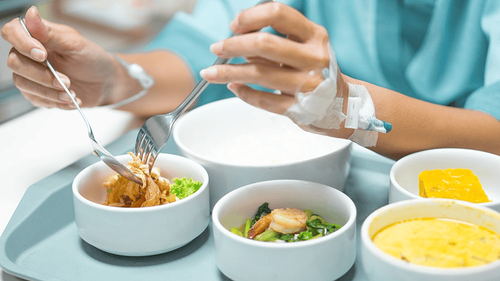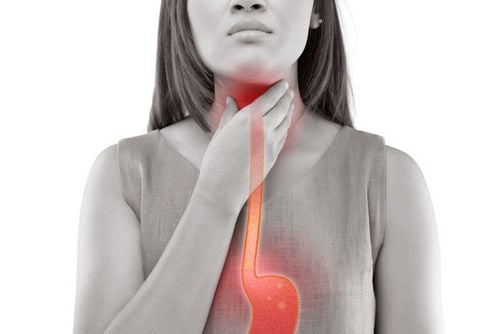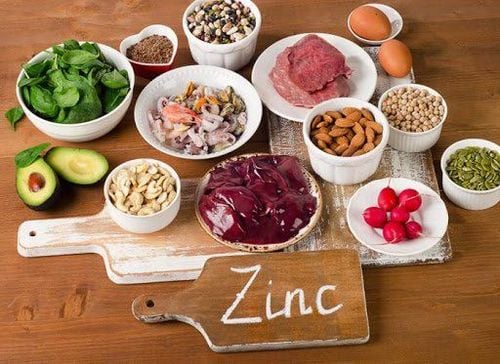1. What Are Taro Leaves?
Taro leaves are the heart-shaped foliage of the taro plant (Colocasia esculenta), which thrives in subtropical and tropical climates.
While taro is primarily recognized for its edible starchy roots, the leaves are also a staple in various cuisines. When cooked, taro leaves can offer numerous health benefits due to their nutrient-rich profile.
Nutritional Composition of Taro Leaves: Taro leaves are a low-calorie vegetable that is rich in potassium, folate, and vitamins A and C. Their low-calorie and high-fiber content makes them an essential addition to a balanced diet.
One cup of cooked taro leaves (145 grams) contains:
- Calories: 35
- Carbohydrates: 6 grams
- Protein: 4 grams
- Fat: Less than 1 gram
- Fiber: 3 grams
- Vitamin C: 57% of the Daily Value (DV)
- Vitamin A: 34% of the DV
- Potassium: 14% of the DV
- Folate: 17% of the DV
- Calcium: 13% of the DV
- Iron: 10% of the DV
- Magnesium: 7% of the DV
- Phosphorus: 6% of the DV
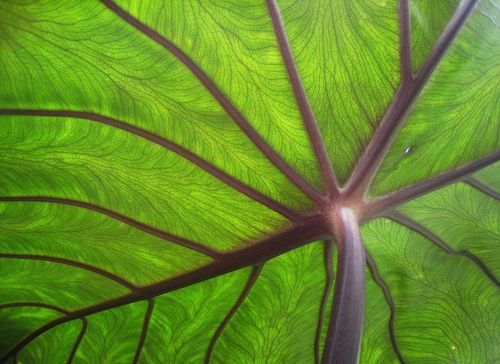
2. Potential Benefits of Taro Leaves
Due to their nutrient density, taro leaves may offer several health benefits, including:
- Helps Prevent Disease: Taro leaves are high in antioxidants, which help reduce harmful substances in the body, such as free radicals. If unchecked, free radicals can lead to inflammation and various serious conditions like cancer, autoimmune diseases, and heart disease. In addition, taro leaves are also an excellent source of vitamin C and polyphenols, two of the most common antioxidant compounds. Therefore, regular consumption of cooked taro leaves will help reduce free radicals in the body, thereby supporting disease prevention.
- Supplements with Essential Nutrients: Taro leaves are versatile and can easily fit into various diets. Their low carbohydrate and fat content contribute to their low-calorie count, making them an excellent food choice for maintaining a healthy body weight. Moreover, they are a rich source of fiber: one cup of cooked taro leaves provides 3 grams of fiber. With a high water content—comprising 92.4%—taro leaves help control weight by promoting feelings of fullness during meals, leading to reduced caloric intake. Therefore, substituting dishes high in calories with taro leaves can help achieve a healthy weight.
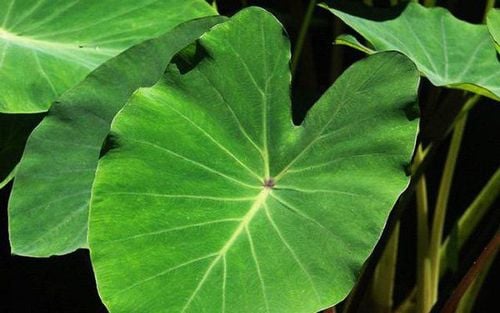
- Boosts Heart Health: A diet that includes a variety of nutrient-dense fruits and vegetables is strongly linked to improved heart health. Taro leaves fall into the category of dark green leafy vegetables, similar to spinach, kale, and Swiss chard. A study conducted in 2016 found that consuming a considerable amount of dark green leafy vegetables may lower the risk of cardiovascular disease by 15.8%. Taro leaves also provide a significant amount of nitrates, which help in managing blood pressure. Incorporating taro leaves into a daily diet can support heart health and flexibility.
- Toxicity of Taro Leaves: When consuming taro leaves in their raw form, it is important to be cautious about their toxic components, as improper handling can lead to harmful side effects. Taro leaves contain high levels of oxalate, a natural compound found in many plants. Individuals at risk of kidney stones should avoid foods high in oxalate, as it can contribute to stone formation. While many other foods, such as spinach, beans, soy products, and beets, also contain oxalate, their levels are usually low enough to avoid significant toxic effects. Young taro leaves tend to have higher oxalate content than older leaves, though both are toxic when raw. Handling raw leaves may cause a tingling sensation on the hands, so wearing protective gloves is recommended. To inactivate the toxic oxalates in taro leaves, they must be cooked until soft. This can be achieved by boiling them for a few minutes or baking them for 30 minutes to an hour. An alternative method for reducing harmful oxalates is to soak the leaves in water for about 30 minutes or leave them overnight.
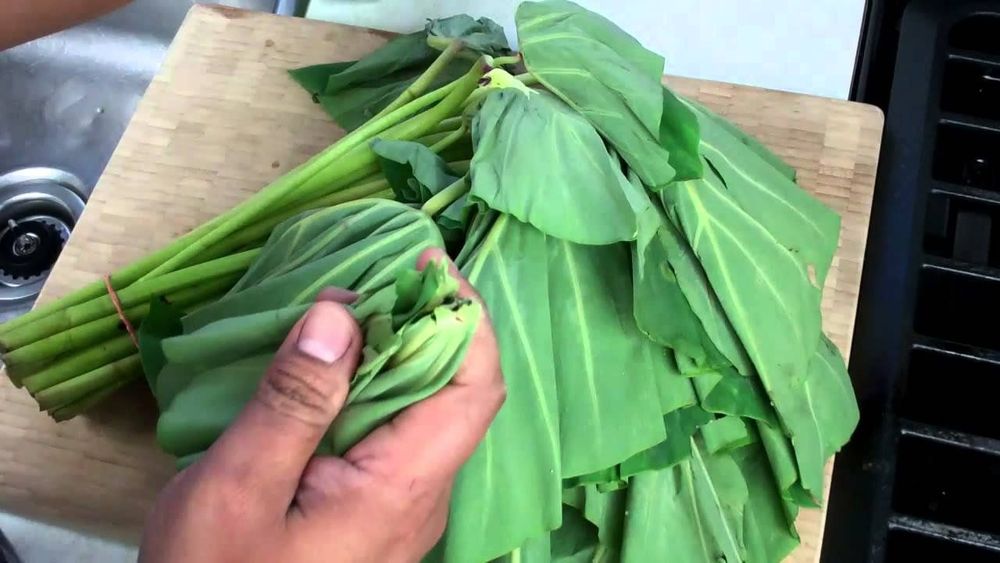
Once the oxalate toxicity is addressed, taro leaves can be safely enjoyed by most people. However, those at high risk for kidney stones should avoid taro leaves entirely due to their high oxalate content.
3. Ways to Use Taro Leaves
Taro leaves are traditionally consumed in tropical and subtropical regions and are now commercially available worldwide. Different regions have unique recipes for preparing taro leaves. When cooked, the leaves have a mild, nutty flavor and can be incorporated into various dishes to enhance flavor.
In Hawaii, taro leaves are referred to as Luau leaves, and they are often used to make the famous dish Lau Lau, where the leaves wrap steamed fish and pork. In some parts of India, taro leaves are used to create a dish called alu wadi. In this preparation, the leaves are coated with a spice mixture, rolled up, and steamed for 15–20 minutes. In the Philippines, taro leaves are cooked with coconut milk and aromatic spices to prepare a dish called Laing. Additionally, taro leaves can be added to soups, stews, and casseroles, making them a versatile ingredient.
Last but not least, taro leaves may also be cooked and eaten like other leafy greens, such as spinach and kale; however, it is crucial to cook them sufficiently to minimize oxalate content.
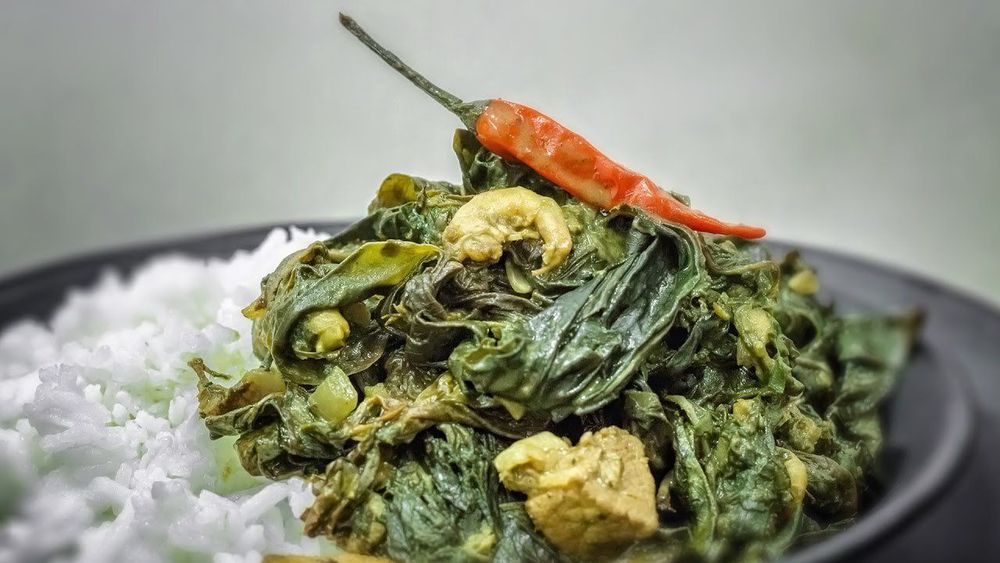
Article reference source: healthline.com
To arrange an appointment, please call HOTLINE or make your reservation directly HERE. You may also download the MyVinmec app to schedule appointments faster and manage your reservations more conveniently.




